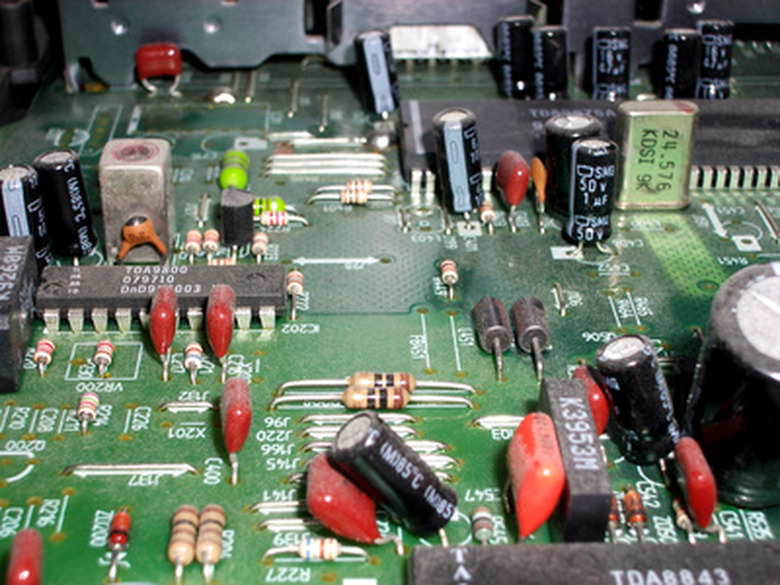The Use Of A Series & Parallel Circuit Connection
Series and parallel circuit connections can be made in thousands of different ways and with all types of electronic components. Most electronic circuit designers first learn how to use resistors, batteries and LEDs in series and parallel connections. Once these basics are learned, often in the first year of college-level electronic classes, you will have the ability to customize electronic designs to perform specific functions.
Voltage Dividers
Voltage Dividers
Resistors are arranged in series to divide voltages to power electronic devices that require different voltage levels. Taps, the points within the series resistor network that have different voltage levels, are then wired to other electronic components such as voltage regulators, which can be used to produce a constant voltage equal to the tap voltage.
Battery Voltage
Battery Voltage
Battery voltage is increased when batteries are placed in series. Placing two, five Volt batteries in series results in a battery with a voltage of 10 Volts. When connecting batteries in series the batteries need not have the same voltage, but they should have the same ampere-hour capacity. Ampere-hour capacity is a measure of how long a battery can supply a specific level of electrical current for. For example a 20 ampere-hour battery can supply 20 amperes for one hour or five amperes for four hours.
Battery Current
Battery Current
The total available battery current is increased when batteries are placed in parallel. The total amount of electrical current from batteries in parallel, in terms of ampere-hours, is equal to the sum of the ampere-hour rating of each battery placed in parallel. When connecting batteries in parallel, only use batteries that have the same voltage. Also realize that the voltage across batteries connected in parallel will just be the battery voltage. They won't sum as in a series connection.
Light Emitting Diodes
Light Emitting Diodes
Light emitting diodes (LEDs), electronic components that emit light when a voltage is applied, are often arranged in parallel and in series. One advantage of arranging LEDs in a parallel is that when one LED light goes out, the rest will stay lit. In a series LED arrangement, when one light goes out, so will all the rest. Series LED arrangements however require less electrical current to operate than parallel arrangements.
Different Resistor Values
Different Resistor Values
When a resistor is placed in series with other resistors, the total resistance of the series resistors is equal to the sum of the resistor values. This fact about resistors in series lets you create resistors with a higher value by simply connecting resistors in series.
When a resistor is placed in parallel with other resistors, the total resistance of the parallel resistors will be less than the lowest value of each and every resistor in the parallel resistor network. Designers use a special formula for calculating the total resistance value of resistors in parallel. This formula is given in the Resource section.
Cite This Article
MLA
Stansberry, Mark. "The Use Of A Series & Parallel Circuit Connection" sciencing.com, https://www.sciencing.com/use-series-parallel-circuit-connection-6495038/. 24 April 2017.
APA
Stansberry, Mark. (2017, April 24). The Use Of A Series & Parallel Circuit Connection. sciencing.com. Retrieved from https://www.sciencing.com/use-series-parallel-circuit-connection-6495038/
Chicago
Stansberry, Mark. The Use Of A Series & Parallel Circuit Connection last modified March 24, 2022. https://www.sciencing.com/use-series-parallel-circuit-connection-6495038/
